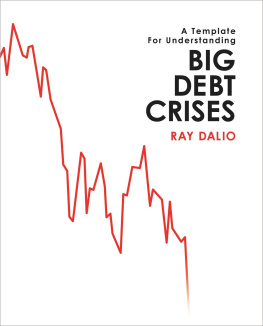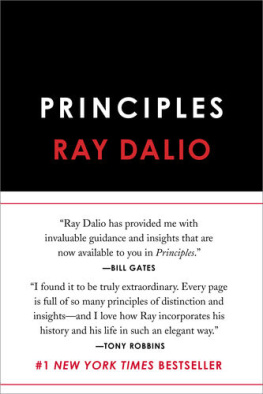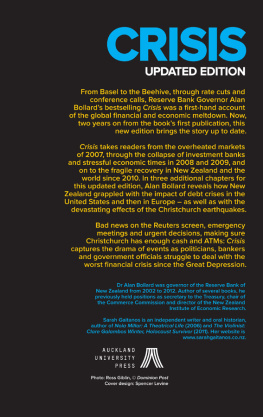Ray Dalio - Big Debt Crises
Here you can read online Ray Dalio - Big Debt Crises full text of the book (entire story) in english for free. Download pdf and epub, get meaning, cover and reviews about this ebook. year: 2018, publisher: Bridgewater, genre: Politics. Description of the work, (preface) as well as reviews are available. Best literature library LitArk.com created for fans of good reading and offers a wide selection of genres:
Romance novel
Science fiction
Adventure
Detective
Science
History
Home and family
Prose
Art
Politics
Computer
Non-fiction
Religion
Business
Children
Humor
Choose a favorite category and find really read worthwhile books. Enjoy immersion in the world of imagination, feel the emotions of the characters or learn something new for yourself, make an fascinating discovery.
- Book:Big Debt Crises
- Author:
- Publisher:Bridgewater
- Genre:
- Year:2018
- Rating:5 / 5
- Favourites:Add to favourites
- Your mark:
Big Debt Crises: summary, description and annotation
We offer to read an annotation, description, summary or preface (depends on what the author of the book "Big Debt Crises" wrote himself). If you haven't found the necessary information about the book — write in the comments, we will try to find it.
Ray Dalios book is must reading for anyone who aspires to prevent or manage through the next financial crisis. -Larry Summers
A terrific piece of work from one of the worlds top investors who has devoted his life to understanding markets and demonstrated that understanding by navigating the 2008 financial crisis well. -Hank Paulson
An outstanding history of financial crises, including the devastating crisis of 2008, with a very valuable framework for understanding why the engine of the financial system occasionally breaks down, and what types of policy actions by central banks and governments are necessary to resolve systemic financial crises. This should serve as a play book for future policy makers, with practical guidance about what to do and what not to do. -Tim Geithner
Dalios approach, as in his investment management, is to synthesize information, and to convert a sprawling and multi-faceted issue into a clear-cut process of cause and effect. Critically, he simplifies without over-simplifying. -Financial Times
For the 10th anniversary of the 2008 financial crisis, one of the worlds most successful investors, Ray Dalio, shares his unique template for how debt crises work and principles for dealing with them well. This template allowed his firm, Bridgewater Associates, to anticipate events and navigate them well while others struggled badly.
As he explained in his #1New York TimesBestseller,Principles: Life & Work, Dalio believes that most everything happens over and over again through time so that by studying their patterns one can understand the cause-effect relationships behind them and develop principles for dealing with them well. In this 3-part research series, he does that for big debt crises and shares his template in the hopes reducing the chances of big debt crises happening and helping them be better managed in the future.
The template comes in three parts provided in three books: 1) The Archetypal Big Debt Cycle (which explains the template), 2) 3 Detailed Cases (which examines in depth the 2008 financial crisis, the 1930s Great Depression, and the 1920s inflationary depression of Germanys Weimar Republic), and 3) Compendium of 48 Cases (which is a compendium of charts and brief descriptions of the worst debt crises of the last 100 years). Whether youre an investor, a policy maker, or are simply interested, the unconventional perspective of one of the few people who navigated the crises successfully, Principles for Navigating Big Debt Crises will help you understand the economy and markets in revealing new ways.
Ray Dalio: author's other books
Who wrote Big Debt Crises? Find out the surname, the name of the author of the book and a list of all author's works by series.












